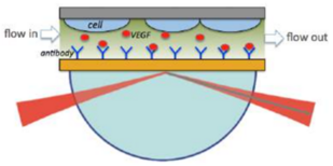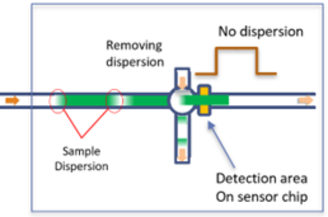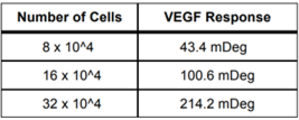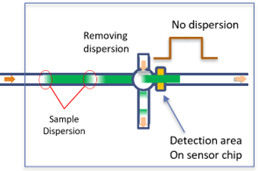Real-time Monitoring of Biomarker Expression using Biosensing Instrument BI-SPR Systems
Vascular endothelial growth factor (VEGF) is an angiogenic signal protein biomarker produced by oxygen-hungry cells to stimulate the growth of blood vessels. It binds to specialized receptors on the surfaces of endothelial cells and stimulates them to grow new blood vessels during embryonic development. Certain types of tumor cells produce abnormally large amounts of VEGF or block the action of angiogenesis inhibitors. This action is termed as “angiogenic switch”, which leads to metastasis to the tumor by providing blood supply for new secondary tumors to grow.
Thanks to the new generation BI-SPR systems by Biosensing Instrument, this variation of VEGF factor secretion can be monitored in real-time through SPR fluidic techniques, by integrating a mini cell culture module into the flow cell of a BI-SPR setup. Unlike the traditional configuration of SPR systems for biomarker detection, living cells are cultured on the ceiling of the SPR flow cell chamber and biomarker secretion from cells can be rapidly monitored [F1].

F1 – Experimental setup with cancer cells immobilized onto the ceiling of the BI-SPR flow channel. Cancer cell excretions can be detected by capture proteins immobilized on the sensor surface.
In a recent study, this setup was tested for the SKOV-3 cell line related to ovarian cancer. Thanks to cell immobilization and the BI-DIRECTFLOW™ technology [F2] patented by Biosensing Instrument, it was possible to inject a certain amount of Ca2+ (500 mM) ionophore to stimulate VEGF excretion from the cells. The table below [F3] summarizes the amount of VEGF released following exposure to the stimulant.

F2 – BI-DIRECTFLOW™ patented technology

F3 – VEGF response for increasing cell statistics.
Using this new strategy, biomarker molecules secreted from living cells were detected and analyzed. The flow setup mimics the natural microenvironment of cells and tissues and opens the doors to many other potential applications, especially in the study of cellular signaling pathways and antineoplastic drug development.


